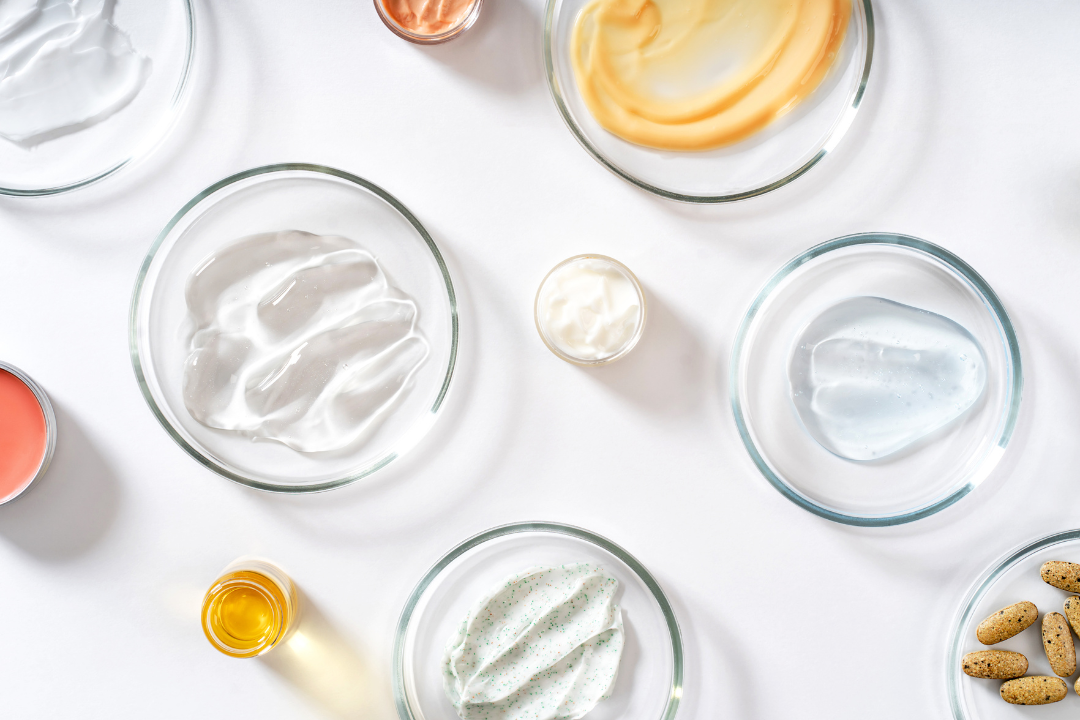
Ingredients
What makes up your products?
Have you ever ended up in the ingredients section of a product you are interested in, only to be overwhelmed by a bunch of long, complicated words? Here are a few tips and explanations that might help!
Common Ingredients
Cosmetics ingredients can be natural, such as plant extracts and essential oils, or synthetic, such as parabens and preservatives. The most common ingredients found in cosmetics are emollients, emulsifiers, humectants, and preservatives. Emollients are used to soothe and soften the skin, and can help to reduce flakiness and roughness. They also form a protective barrier on the skin, helping to keep moisture in and irritants out. Common emollients used in cosmetics include lanolin, mineral oil, and glycerine. Emulsifiers allow ingredients to bind together, create a stable product and are essential in creating a smooth, homogenous mixture of oil and water. Popular emulsifiers used in cosmetics include cetearyl alcohol and glyceryl stearate. They also help to reduce the feeling of greasiness on the skin, making cosmetics more pleasant to use. Humectants help bind moisture to the skin. Common humectants found in cosmetics include hyaluronic acid, glycerin, sorbitol, and propylene glycol. They can help lock moisture into the skin, resulting in a smoother and softer complexion. Humectants also help protect the skin from environmental aggressors like pollution and sun damage. Preservatives are essential ingredients in cosmetics to protect the product from bacteria, fungi, and other microorganisms. They help to ensure the product’s safety, quality, and shelf life. Common preservatives used in cosmetics include parabens, phenoxyethanol and ethanol. Phenoxyethanol is a broad-spectrum preservative that is often used in place of parabens due to its low toxicity.
Long-chain molecules, such as silicones and polymers, are also commonly used to give a smooth, silky feel. For natural cosmetics, plant-based ingredients like aloe vera, chamomile, and jojoba oil are often used for their soothing, hydrating, and nourishing properties.
Decoding the label
With so many ingredients, it's important to read the labels on your cosmetics to ensure that you are getting the right product for your skin type. But how do you know which ingredients are good and which ones are... not so good? There are a few common scientific names that are more recognisable by their everyday terms. Here are a few examples:
Vitamin B5: Panthenol
Vitamin C: L-Ascorbic Acid
Vitamin A (different forms): retinol, retinoic acid, retinyl palmitate and retinyl acetate
Aloe Vera: Aloe Barbadensis
Jojoba Seed: Simmondsia Chinensis
Lavender: Lavandula Angustifolia
What does "Natural" mean?
A lot of products advertise the fact that they have "natural" ingredients. But what does this mean? The Australia Government defines a natural chemical as:
-
an unprocessed chemical that is found in nature, such as chemicals from plants, micro-organisms, animals, the earth and the sea
-
a chemical that is found in nature and extracted using a process that does not change its chemical composition
Extraction can be performed via filtration, centrifugation, sedimentation or cold pressing.
What does "Organic" mean?
If a product is "organic" it refers to the production of the product as well as the actual ingredients. Organic cosmetics use natural ingredients that are free from synthetic chemicals. They are grown without the use of pesticides, herbicides, or other harmful chemicals. Some organisations such as Australian Certified Organic Ltd can certify that a company is producing organic products to sell to consumers. They provide an organic certification by "auditing an operation’s methods to ensure that they comply with the guidelines of organic production."
If you are ever have any questions about ingredients you can see in our products we are happy to answer any enquiries via email!





